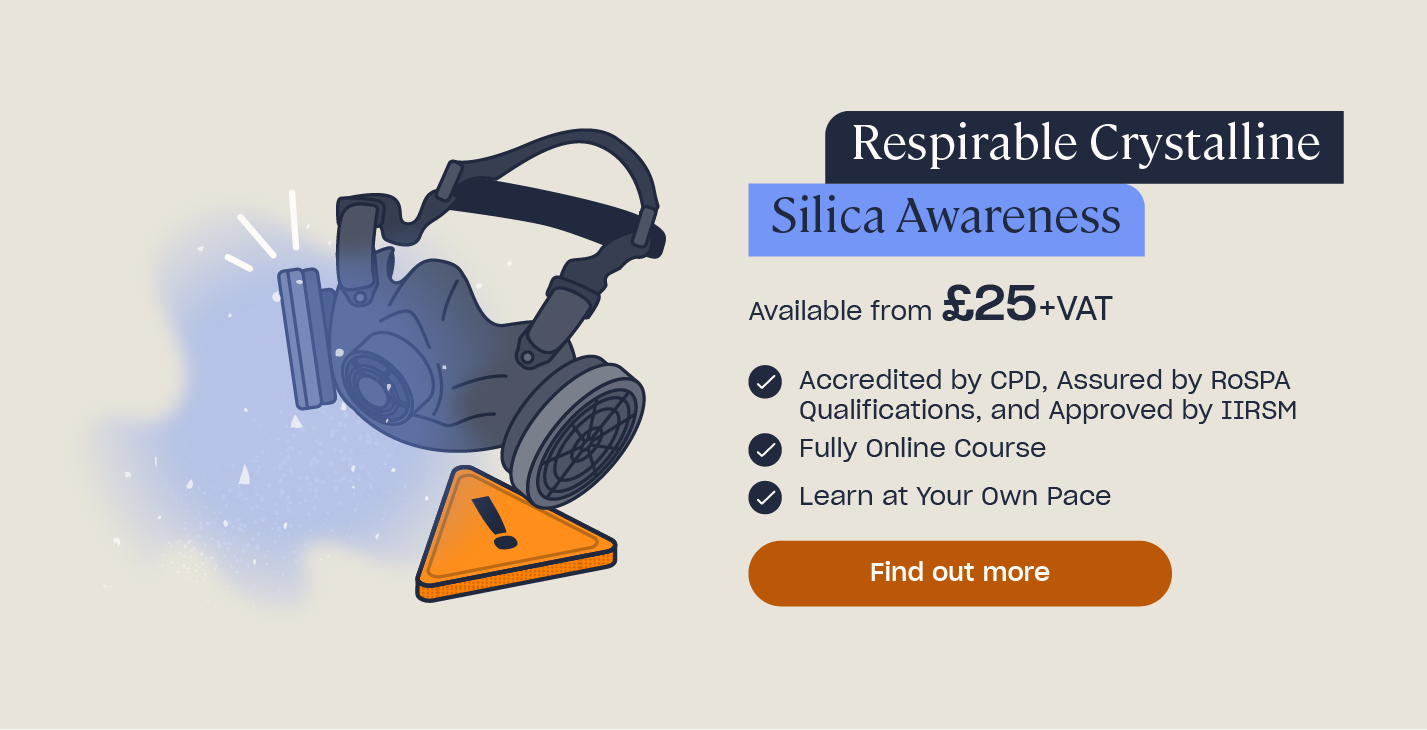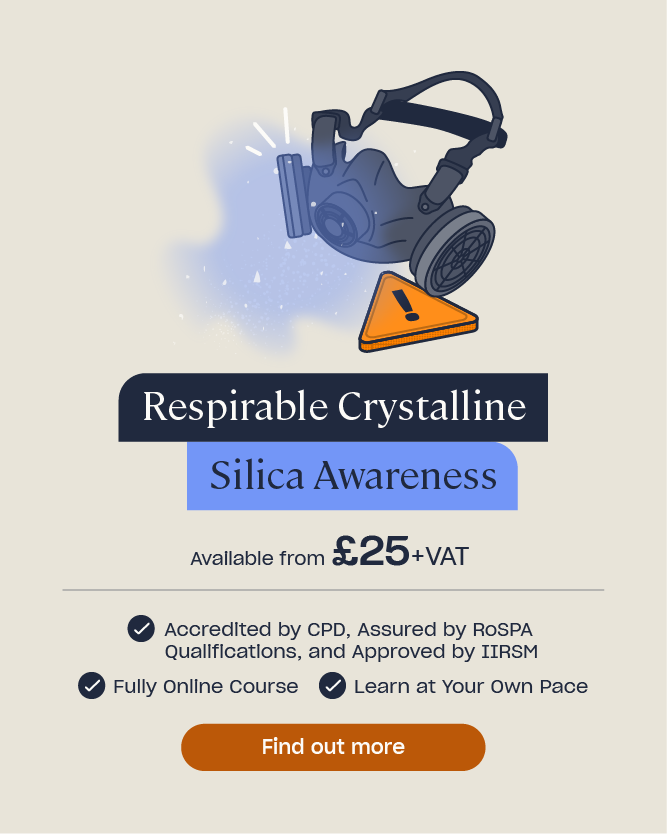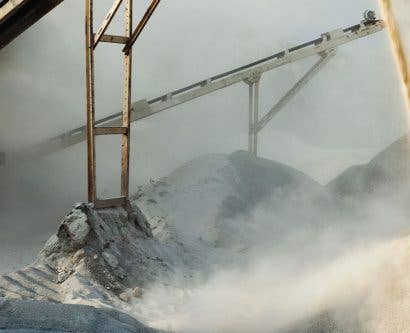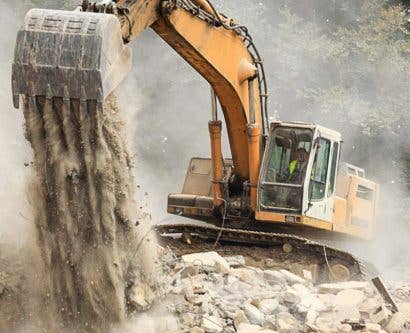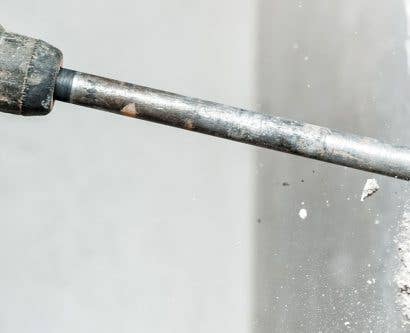Using the Assess, Control and Review (ACR) Model to Measure & Control Silica Dust Hazards
Silica, or silica dioxide, is a natural substance found in most sand, rocks and clay. It’s also present in common construction products including concrete, brick, mortar, tile and stone. Therefore, common construction activities, such as drilling, cutting, sanding and grinding, can produce large volumes of silica-containing dust.
If these silica dust particles are small enough to penetrate deeply into the lungs when breathed in, they are known as respirable crystalline silica (RCS) dust. RCS dust can have serious health impacts for anyone breathing them in, including the development of illnesses such as silicosis, Chronic Obstructive Pulmonary Diseases (COPDs) and lung cancer. Therefore, it’s essential that the hazards associated with RCS exposure are effectively controlled to reduce the risks for workers and anyone in the vicinity.
Due to its hazardous nature, RCS is considered a hazardous substance and is covered under the Control of Substances Hazardous to Health Regulations 2002 (COSHH) (as amended). Therefore, employers have a legal duty to control respirable crystalline silica exposure.
However, everyone involved in construction activities has a responsibility to manage the hazards associated with their work. This includes employers, principal designers and principle contractors, designers and contractors, small builders and employees. To help you assess the risks in your workplace when carrying out a risk assessment, the HSE recommends that you use the Assess, Control, Review (ACR) model.

What is the ACR Model?
The ACR model involves three key steps that will help you to assess the health hazards in your workplace and take steps to manage them before starting work:
- Assess the risks – In step one you should identify the hazards, as well as consider the nature of the work environment and the tasks carried out to evaluate the risks.
- Control the risks – You should then select appropriate control measures to eliminate or reduce the volume of dust created in the workplace.
- Review the controls – Finally, you should regularly review the controls you have selected to ensure they remain effective and are in good working order.
These stages will be further outlined below.
Step 1: Assess the Risks
When assessing the risks involved with your work activities, you must consider the following:
- Task: Think about what tools and materials are being used to carry out the work activity.
- Work environment: You should think about the conditions of the work environment. For example, if the activity takes place in an enclosed environment the risks will increase.
- Task duration and frequency: You should consider how long a task takes to complete and how often a task is carried out. RCS producing tasks that are carried out more often and take longer to complete will expose workers to higher volumes of RCS dust.
Step 2: Control the Risks
Once you have identified the hazards and assessed the risks, you will need to select methods to control them. You should select control measures in line with the hierarchy of control:
- Eliminate the hazard. For example, you can eliminate cutting processes by ordering materials that are pre-cut to size, pre-prepared or pre-finished.
- Substitute for a less hazardous alternative. For example, you could substitute dry methods for wet methods, such as using water jetting instead of abrasive blasting.
- Engineering controls. For example, using on-tool dust extraction, general mechanical ventilation or water suppression systems.
- Administrative controls. These controls alter the way you work to reduce the risks. Administrative controls include ‘designing out’ hazards in the design stage, enforcing safe systems of work, and ensuring proper housekeeping and training.
- Personal protective equipment (PPE). Including suitable eye protection, such as googles, and respiratory protective equipment (RPE), such as powered or non-powered respirators.
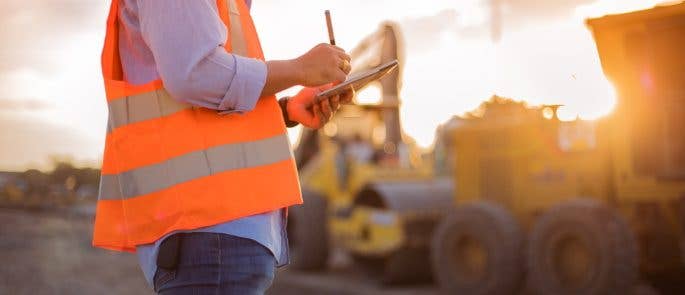
You must consider the hierarchy when you select controls to eliminate or reduce the risks associated with work activities. You should always aim to prevent the risks from occurring at all, before attempting to control them.
RCS has a long-term exposure limit of 0.1 mg/m³ averaged over an eight-hour time period. It’s essential that the levels of dust are monitored in the workplace and controls are used to protect workers if the RCS concentration in the air exceeds 0.1 mg/m³. PPE should only ever be used as a last resort if you are unable to reduce the exposure to below 0.1 mg/m³ using elimination, substitution, engineering or administrative controls.
It’s important to be aware that there are very important conditions attached to the use of RPE and suitable respiratory protection must be chosen carefully to suit the wearer and the specific hazards faced.
Note: The types of controls outlined above are only a few examples of effective control measures that can be used to eliminate or reduce the risks associated with RCS producing work activities. Any control measures that you choose to use must be properly tailored to your workplace and work activities.
Step 3: Review the Controls
The third and final step of the ACR model is to review the controls. To do this, you must ensure appropriate:
-
- Supervision: Employees must be adequately supervised and any controls and RPE must be used correctly.
- Maintenance: All controls and equipment must be regularly checked and maintained in line with the manufacturer’s guidance and stored properly.
- Monitoring: Your organisation may be required to arrange appropriate health surveillance for employees to ensure that any signs of work-related ill-health are identified.
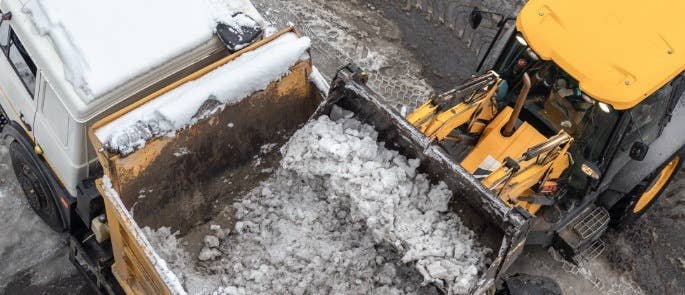
Using the ACR Model to Manage Silica Dust Hazards
The HSE recommends that you should use the ACR Model when assessing the risks associated with different work activities. The information below demonstrates how you should use the ACR Model in practice.
Dry Sweeping Construction Dust and Debris
You can use the ACR model to assess, control and review the risks associated with dry sweeping dust and debris:
1. Assess: Dry sweeping dust and debris is a very high risk activity. This is because sweeping up can push significant quantities of respirable dust into the air and expose workers, and anyone in the vicinity, to high levels of dust. The level of risk and specific hazards will depend on the volume and type of dust being swept. The risk associated with this activity will increase if the dust or debris contains RCS or wood dust, it occurs over a long time frame or is carried out in an enclosed space.
2. Control: Dry sweeping dusts and debris is very hazardous and should be avoided as far as possible. You should first consider methods to eliminate or substitute the hazard for a less risky process before work begins. You should:
- Use the design and planning phase to carefully consider the type and volume of waste that will be produced during the work activity. All work should then be planned and designed to eliminate or minimise the risks. For example, you could order pre-cut materials to avoid the need to clear up dust and debris after cutting activities.
- Consider where and when waste materials will be produced on site and identify how often they will need clearing.
- Ensure you have the appropriate dust controls in place before starting work.
These preventative actions will help to eliminate most of the dust. However, you may still have dust and debris that needs to be cleared. If this is the case you should use appropriate control measures to reduce the risks associated with clearing construction waste, including:
- Use a vacuum cleaner (class M or H) with appropriate hoses and attachments to clear finer dusts, especially if working indoors.
- Use general mechanical ventilation when carrying out dust making activities inside to reduce the volume of dust in the work area.
- Use water to damp down dust before removing it using a brush, rake or shovel, and a bucket or wheelbarrow.
- Wear any required Respiratory Protective Equipment (RPE) for the task and environment. RPE chosen must have the appropriate protection factor for the task and tight-fitting RPE must be face-fit tested on a clean-shaven face.
- Consider wearing coveralls that don’t retain dust. This will reduce the risks from dust lodging in employees’ clothing. Work coveralls should not be taken home, instead arrangements should be made for cleaning coveralls and safely storing them on-site.
3. Review: Step three of the ACR model is to review the preventative and control measures that you have selected to ensure that they are adequately reducing the risks associated with your work activities. To do this, you should:
- Supervise the use of controls and RPE to ensure they are being used and worn correctly.
- Properly check, clean, maintain and store all controls and RPE in line with the manufacturer’s guidance.
- Consider if a health surveillance programme is required to monitor employee health.
Uncontrolled dust exposure can have significant impacts on employee health. Therefore, it’s essential to consider how you can prevent or reduce these hazards. The ACR model is the recommended method of considering the risks associated with different work tasks and how you can prevent and control the hazards.
In this article we have used the example of dry sweeping dust and debris, however, the ACR model can be applied to any workplace activity including:
- Cutting activities.
- Demolition activities.
- Scabbling or grinding concrete.
- Abrasive pressure blasting.
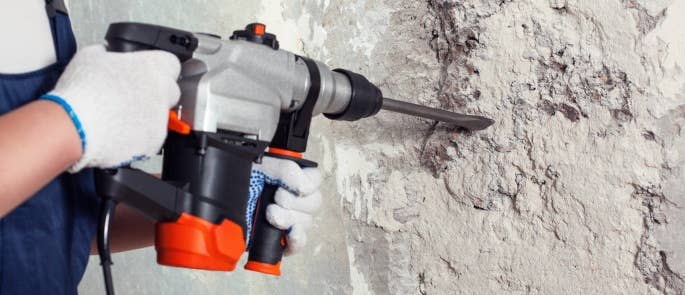
By using the ACR model, everyone involved in your work activities will be able to consider the associated risks and hazards, and manage them to make your workplace safer for you, other employees, and anyone in the vicinity.
What to Read Next:
- Managing Occupational Health in Construction
- What is Respirable Crystalline Silica (RCS) Dust and Why is it Dangerous?
- Respirable Crystalline Silica (RCS) Awareness Training


